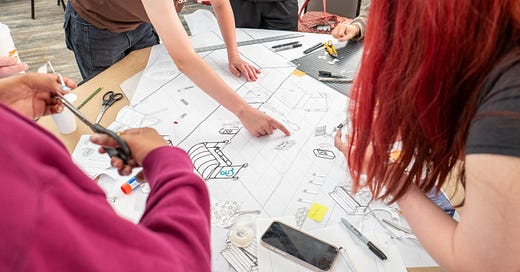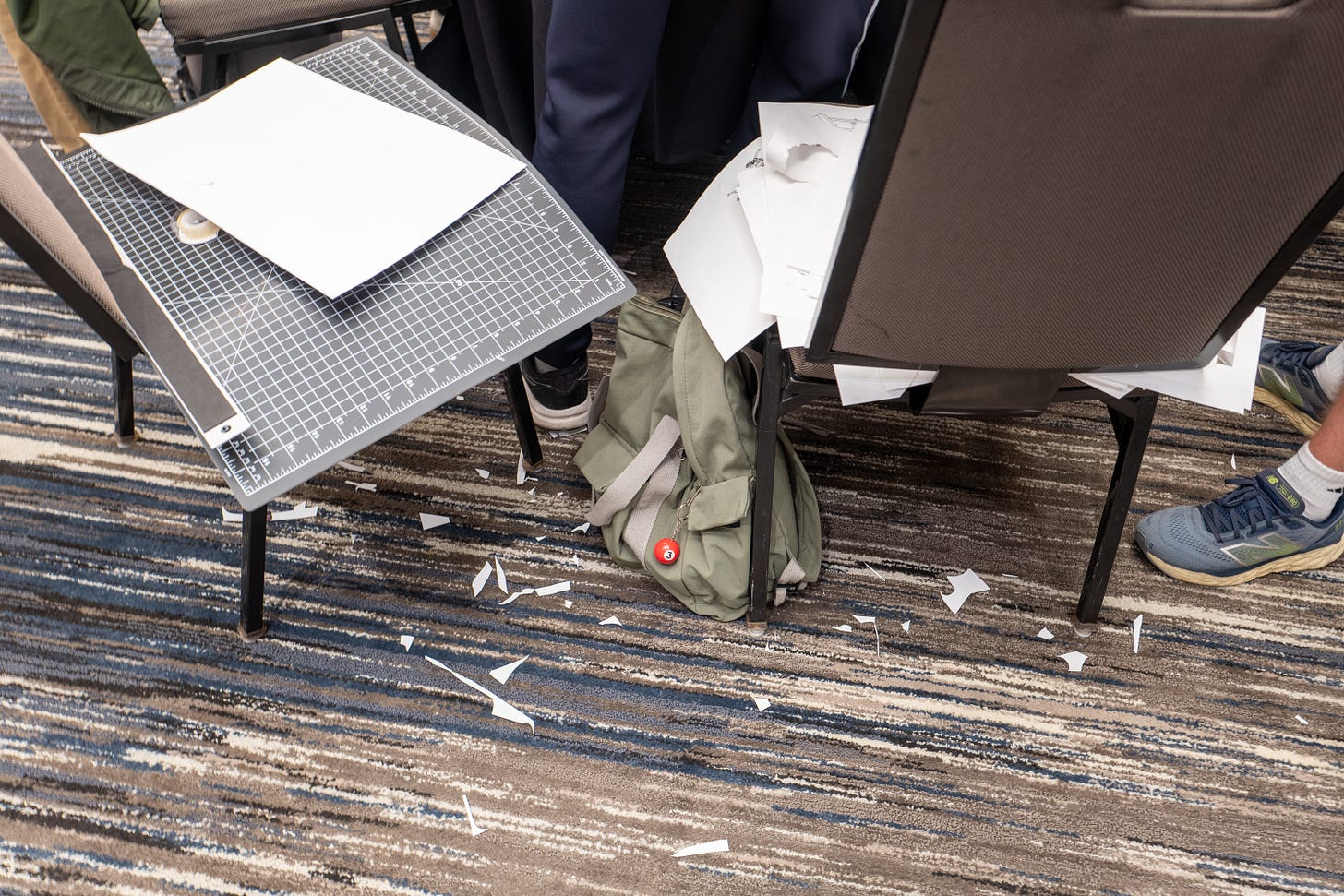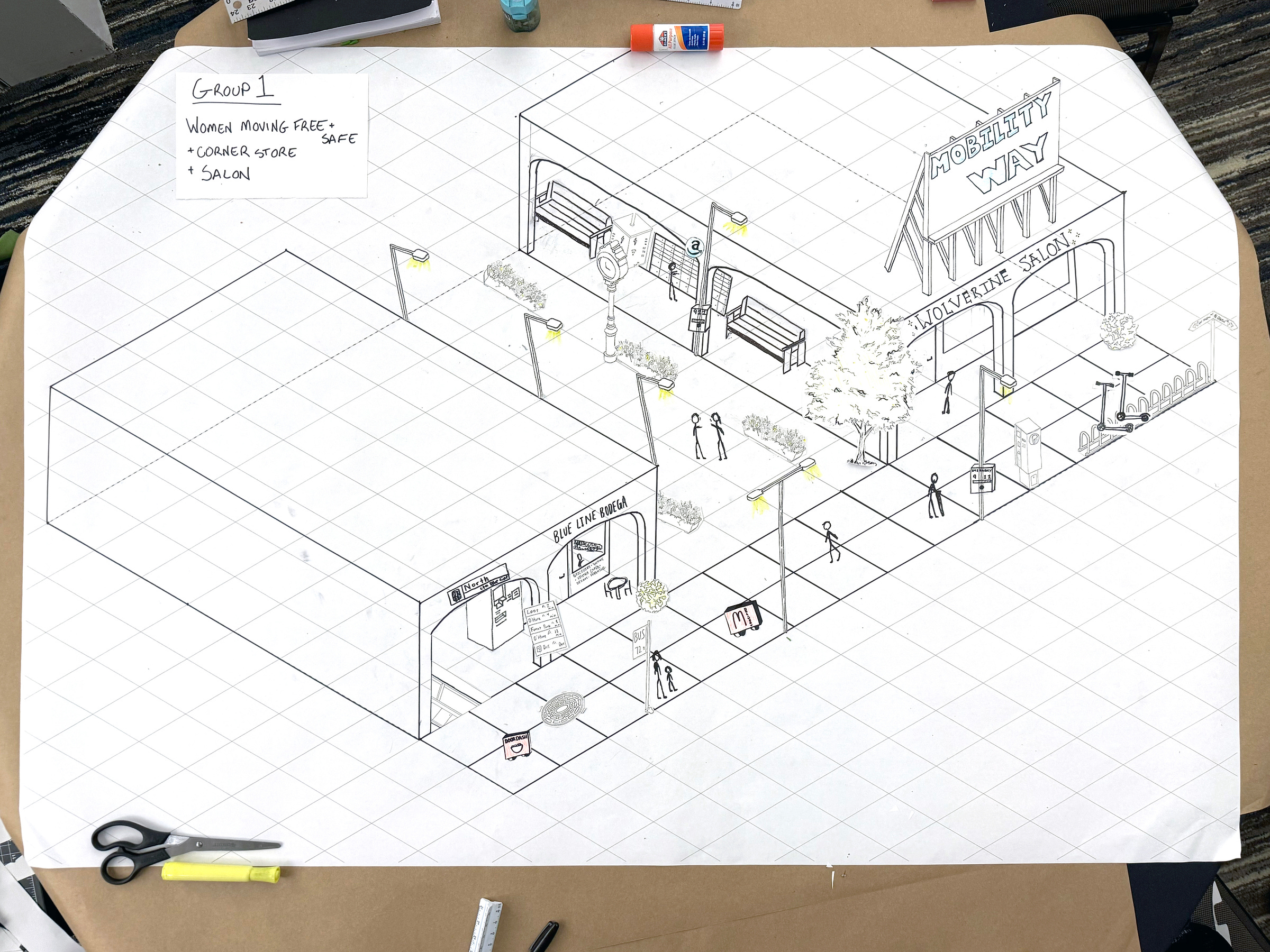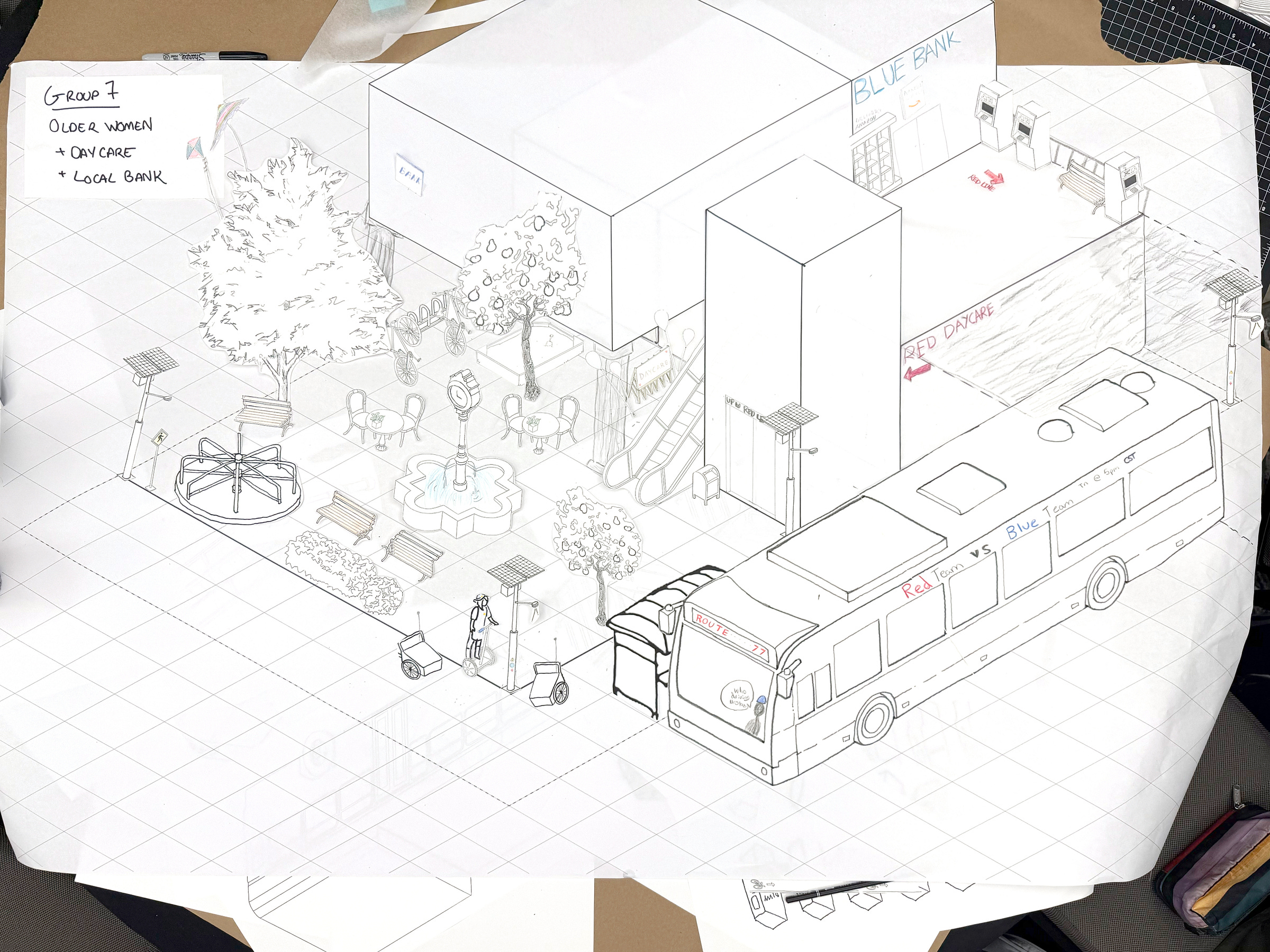Urban Technology at University of Michigan week 255
Can There be Such a Thing as AI-Proof Teaching? Should There be?
We were in Chicago recently, on the final of three stops for our cities intensive this summer (see previous stops in Ann Arbor and Detroit). We’ve taken students to Chicago three times before, so prior newsletters share the kinds of things we’re inquiring about while there: here is thoughts on the relationship between mobility and access, here is what every car in Chicago rolled into a ball looks like, and here are the qualitative aspect of transit. Phew. This time around I’m sharing some thoughts on design workshops and our dance with AI in (and out) of the classroom. It all starts with a personal revelation: I almost flunked sociology.
💬 Hello! This is the newsletter of the Urban Technology program at University of Michigan, in which we explore the ways that data, connectivity, computation, and automation can be harnessed to nurture and improve urban life. If you’re new here, try this short video of current students describing urban technology in their own words or this 90 second explainer video.
🧑🧒🧒 Working on Mobility Hubs, Thinking about AI
As an undergraduate I once got an F on a big sociology paper. The paper was downloaded from the internet and therefore it must be stolen, my professor determined.
This experience comes back to me often these days, now that we're riding a new wave of technology in the classroom. When I was a freshman, the web was causing just about everything to be reinvented. This time AI is the active ingredient. We’re all still experimenting with AI on campus and there is no consensus yet. Some faculty members ban AI; some have AI policies; some have begun favoring in-person activities instead of writing assignments, which can now be faked too easily.
In light of all of this, activities that force students to engage with each other, in realtime, and done by hand on paper seem to have a newfound relevance. This is great news, because that sentence above is a perfect description of the incomplete city workshop methodology that we adopted as part of the urban technology curriculum early on. Last year, Emily Kutil, who leads UT 103 Urban Observation (this year with Matthew Wizinsky as co-instructor), had the great idea to use the same methodology for smaller scale exercises in the middle of the semester, in addition to the full city mural.
To that end, when we were recently in Chicago the students spent a morning designing ‘shared use mobility hubs’ in the style of incomplete city. We once again partnered with the Shared Use Mobility Center (thank you, Benjie!) who have posted a great report on the topic of women-centered mobility hubs. The report focuses on the needs of women as a counterbalance to transportation planning that can be overly focused on the narrow needs of male commuters, which is not the only kind of person who needs to get around town. As the report states:
Women typically make shorter, more frequent trips that don’t happen during peak travel hours. Rather than a home-to-workplace commute, they may need to travel in the neighborhood or to nearby destinations. They may have to drop off or pick up their children at school. They may need to pass by the grocery or the pharmacy. They may be traveling with strollers, bags, wheelchairs, older people, or young children. Women are also more likely to be harassed in public spaces and public transportation. We need to make sure our transportation system feels safe and is safe. If we design, build and operate mobility hubs with the needs of women and caregivers in mind, mobility hubs could make our transportation system work better for everyone.
Each of eight students groups borrowed a persona from the report such as 'paid care workers' or '60+ year old woman' and designed a mobility hub for their needs. This helped us get in the habit of matching research (input) to creative act (output). Emily also gave the teams a fixed footprint and a list of community amenities that had to be fit into that given area, such as things like a corner store, salon, daycare, bank, or energy production/storage. This intertwines a spatial challenge with one of purpose. Spatially, the students need to make everything fit and be accessible. But it also needs to be designed in a way that speaks to the needs of the assigned persona.
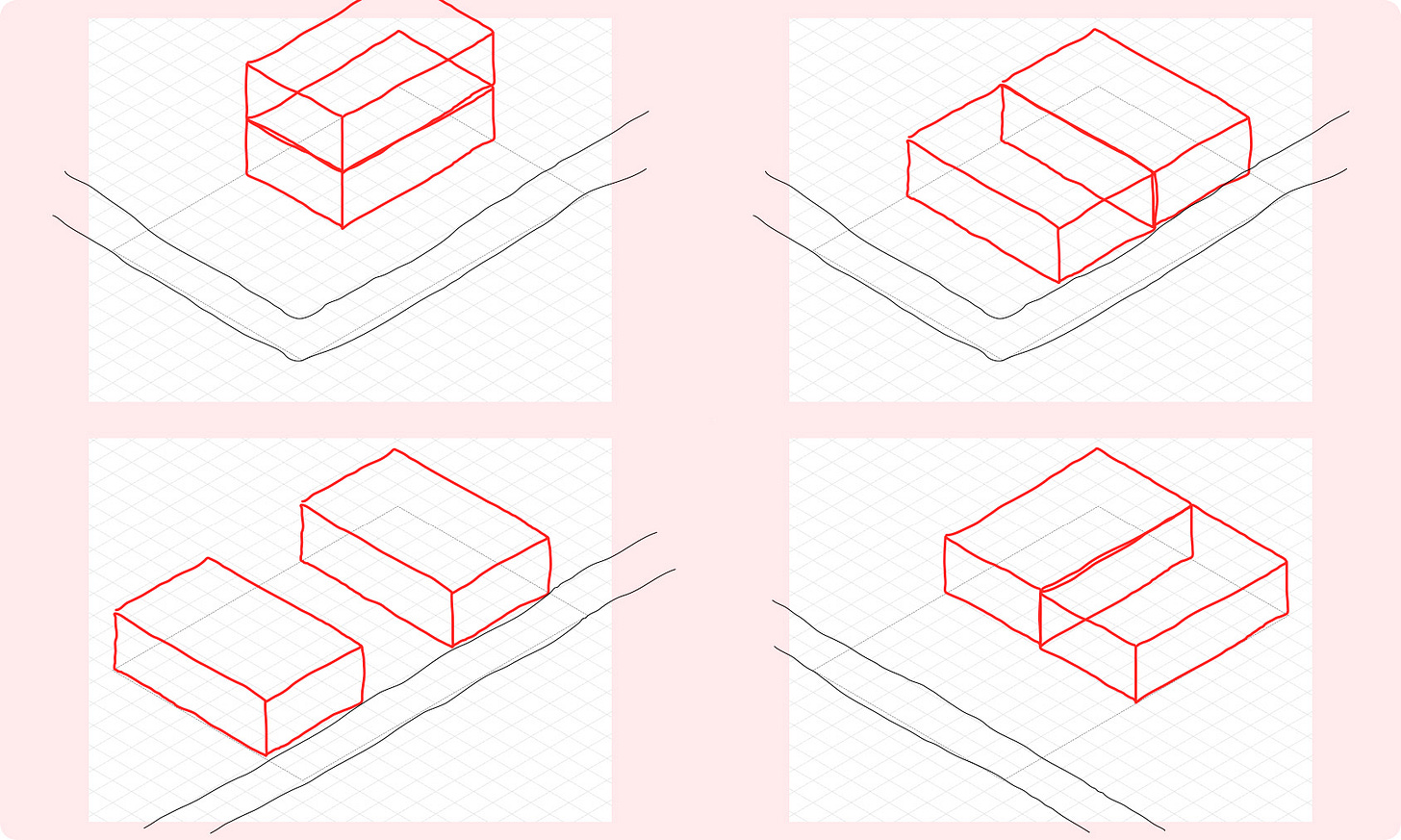
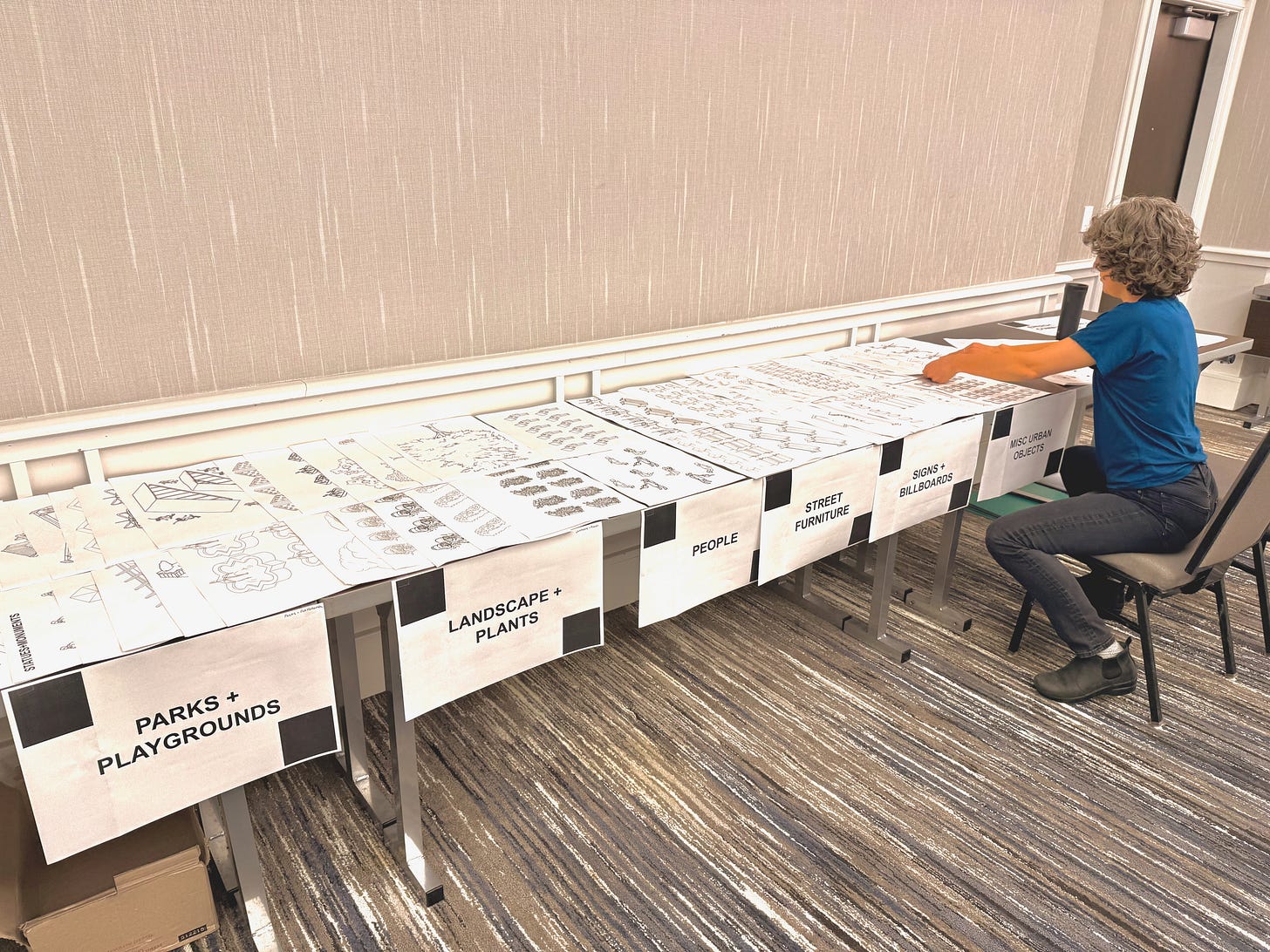
While helping Emily with the workshop I was wondering to myself, "is this AI-proof?" Being on paper means students can't easily ask Chat GPT to do the drawings. This paper setup also makes it intentionally lo-fi, meaning we expect things to look a little wonky. This reduces the pressure to get everything perfect, which in turn (hopefully) reduces the allure of asking an algorithm to do the work. Being a group activity introduces the need for coordination, which means people are talking and negotiating as they figure out how to fill their blank page, and this also can help pull people out of their phones. Then, of course, it's timed. With 90 minutes on the clock students work toward a clear goal, with constrained real estate, and the need to integrate thoughts from all members of the group. All of these factors combine to create a just-right amount of jostle, and you need a little jostle to learn. Sometimes that jostle is metaphorical, but here it’s also physical.
The reason I've been thinking about that F on my sociology paper way back when is because the document I turned in was indeed downloaded from the internet. I had laboriously typed out my analysis of conspicuous consumption in the unix app Pico and formatted everything using HTML by hand so that it would live as a webpage on my own web server, which I also maintained. This allowed me to skip the "pain" of having to email a file to myself for printing in the computer lab. Instead I could go to the lab, load up my website, and print (in retrospect, why did this seem easier to young Bryan?!). No amount of nerdy pleading would convince the professor to actually look at the URL printed on the bottom of the page and realize that it included my full name. That my paper had touched the internet was proof in the mind of my professor that I was not learning.
Incomplete city is probably not "AI-proof" but it's about as close as one can get, and having an AI-proof way of teaching is comforting right now. As faculty riding this great wave of AI-driven change, we need those comforts—not forever, but for a few beats—while we figure out how to keep the jostle in the room. Recalling my inflexible sociology professor, I know we will not allow ourselves to be afraid of new technology like they were. Our answer to AI will come from finding the ways that AI, like the city, is incomplete and developing opportunities to work in that newfound space of possibility.
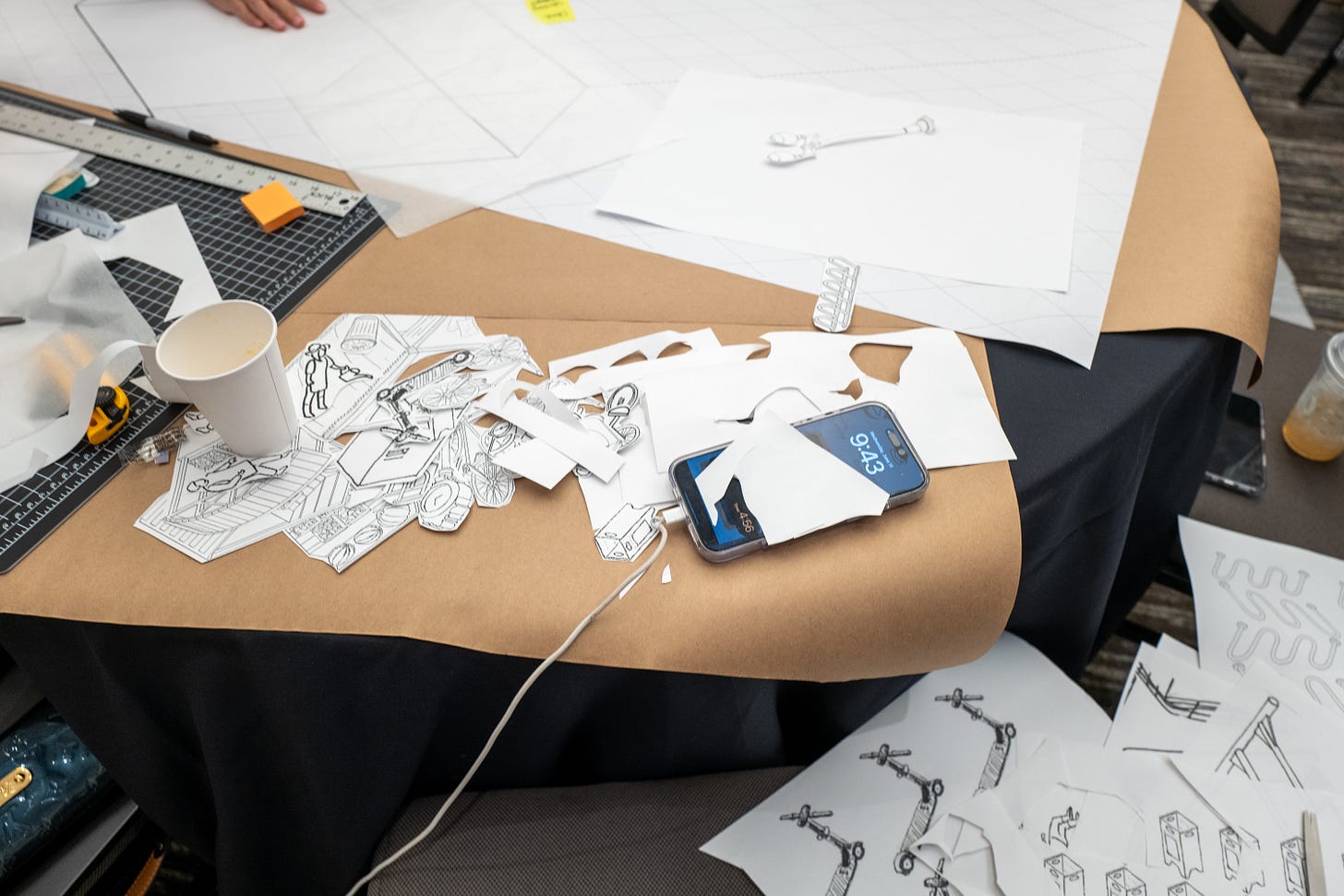
🖼️ Postcard from the Office
We’re working on a new video about the program. Here’s a work-in-progress snap from that process with Lunar North, who are a local animation studio. Urban technology is about cities for people (and turtles and dogs and chickens and moose and aliens)!
These weeks: Three trips down. Semester ends next week and then this cohort will enjoy the rest of their summer. Working on a video (see above). Budget things. UT++ things. Heat wave coming in. Stay cool. 🏃

